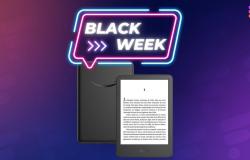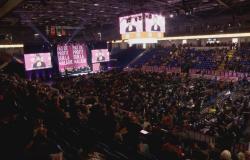According to a Microsoft study carried out in 2015, this duration had gone from 12 seconds in 2000 to around 8 seconds… In fact, it is above all a form of fragmentation: if you are not received within 8 seconds, we move on to something else.
Notifications, social networks and short content (like TikTok or YouTube videos) have accustomed us to constantly changing focus. This fragmentation makes it difficult to concentrate on a single task for long periods of time, because the brain becomes more accustomed to rapid changes rather than persistence. We call this phenomenon ”Popcorn brain”!
This notion of “popcorn brain” therefore refers to a mental state where our brain becomes so accustomed to constant and rapid stimulation (especially via screens and digital content) that it begins to lose the ability to concentrate on tasks. longer or calmer. The term was popularized to describe the effects of excessive consumption of fast-paced digital content – like notifications, short videos, and news feeds – on our attention and mental well-being.
The last 50 years have seen a huge increase in exposure to screens and information, whether through television, the internet or social media. Whereas periods of quiet and boredom used to be more common, they are now often filled by digital devices. This reality generates constant stimulation. As a result, the brain becomes accustomed to the quick rewards of novelty, which impairs our tolerance for long, less stimulating tasks.
The attention deficit generated by the digital age has a profound impact on our memory!
As the ability to concentrate is affected, so is our working memory – the memory used to manage short-term information. Divided attention reduces the ability to store and recall information. Multitasking, developed by technology, that is to say the tendency, encouraged by digital devices and social network content, to alternate between several tasks or to attempt to accomplish several simultaneously, also reduces our quality of memory. Multitasking does affect the quality of attention: although many people think they can multitask, studies show that this often results in lower performance and attention.
Today’s technologies are designed to attract and hold attentionfrequently through mechanisms like push notifications, real-time updates, and interfaces that allow easy navigation between multiple tasks. Social networks and applications also use recommendation algorithms that encourage prolonged use, encouraging the user to move from one content to another without transition.
Multitasking results in :
- Quick switching between applications and platforms: for example, switching between an email, an internet search, a work document and instant messages.
- Receiving and managing constant notifications: Social media alerts, WhatsApp messages, reminders or updates interrupt our attention and cause us to check our devices.
- Simultaneous consumption of content: listening to music or watching a series while browsing the Internet or sending messages has become a norm, even if it overloads attention.
- This is also evident in our professional world by working in parallel with activities such as responding to emails during a meeting, for example, or writing a document while managing interactions on collaboration platforms…
Where does this name come from? Pop-Corn Brain ?
The concept comes from the idea that the brain becomes like a popcorn machine in which the corn is constantly popping in all directions. It’s the same with our attention, which constantly shifts from one idea to another without any real sustained attention. The brain gets used to frequent and quick rewards, like “likes” on social media or the immediate satisfaction of watching a short video. This habit disrupts the neural circuits of attention and reward, making it more difficult to regulate attention and cope with boredom.
In the long term, this can affect productivity, interpersonal relationships, and even psychological well-being, while increasing stress levels and reducing the ability to savor quiet or non-digital moments.
Companies must adapt their communication to these popcorn-brained audiences!
It’s obvious! The popcorn brain phenomenon has a significant impact on business communication because it changes the way employees, customers and partners receive, process and retain information. It is necessary for businesses to adapt their communication to effectively capture the attention of their audiences. Long messages no longer hold the attention of consumers or employers. Today, for example, long and overly detailed emails are no longer read by a significant portion of employees, especially the youngest! This requires companies to simplify and condense their internal messages, using visual formats, such as infographics, summaries or short videos.
The same goes for communications to external audiences; campaigns must be concise and attractive from the first seconds to retain attention. “Snackable” content (i.e. short and quick to consume) such as short videos, direct messages and engaging visuals on social networks should be favored by brands and businesses.
Popcorn brain also poses productivity concerns for businesses.
So much so that more and more of them are developing policies to better regulate the use of digital tools and communication channels in establishing distraction-free times or encouraging practices of disconnection.
Some companies encourage employees to limit non-essential notifications on their computers and smartphones. Others establish deep work slots, these moments without meetings and without distractions, often early in the morning, so that employees can devote themselves to attention-demanding tasks.
It is high time to work on a real culture of attention in order to strengthen human relationships, optimize professional performance, preserve mental and cognitive health and regulate digital consumption which is becoming too important… Today, for work and for private life, we spend on average 6 hours 40 minutes online every day!
Discover all the “C tout com” columns in podcast on this site and find Olivier Moch, live, on the radio every Thursday in “A l’heure Belge”, between 9:10 a.m. to 10 a.m.






